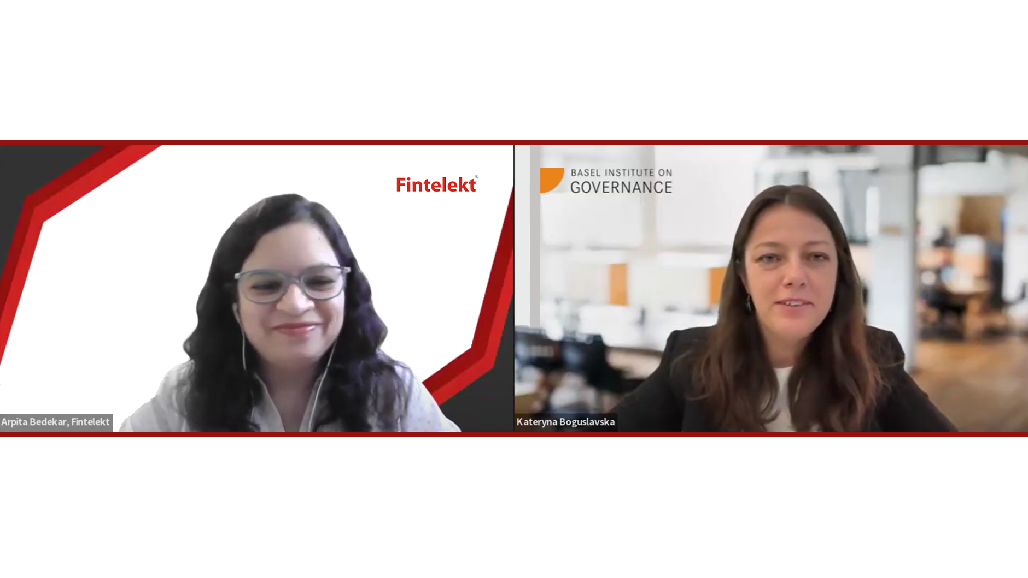 The Asian Bankers Association (ABA) and Fintelekt Advisory Services, an ABA Knowledge Partner, held a very successful webinar on Decoding the Basel AML Index on 6 May 2025 that gathered over 650 participants from over 40 countries..
The Asian Bankers Association (ABA) and Fintelekt Advisory Services, an ABA Knowledge Partner, held a very successful webinar on Decoding the Basel AML Index on 6 May 2025 that gathered over 650 participants from over 40 countries..
Hosted by Arpita Bedekar, Chief Operating Officer, Fintelekt, the webinar featured as resource person Kateryna Boguslavska, PhD, Project Manager Basel AML Index, International Centre for Asset Recovery at the Basel Institute of Governance. The webinar aimed to provide an in-depth understanding of how the Basel AML Index is compiled, its key findings, and how financial institutions, regulators, and policymakers can leverage it to enhance AML/CFT strategies.
SUMMARY
The Basel AML Index is a specialized risk assessment tool that evaluates the vulnerability of countries to money laundering and terrorist financing. Developed in 2012 in response to growing regulatory emphasis on the risk-based approach, the Index was initially tailored to support medium and small financial institutions and the non-financial sector. Today, it is widely used by a range of stakeholders, including global banks, payment systems, and public-sector agencies, with 70% of its users representing the public sector.
The Index does not attempt to measure the actual amount of money laundering, but focuses on evaluating residual risk, which is the combination of a country’s vulnerabilities and the effectiveness of its mitigation measures. This assessment is organized across five key domains:
- AML/CFT/CPF Framework (weightage of 35%): Based on the Mutual Evaluation Reports by the Financial Action Task Force (FATF), U.S. State Department data on money laundering, human trafficking, and environmental crimes.
- Corruption & Bribery (weightage of 17.5%): Includes cyber fraud and financial crime data.
- Financial Transparency & Standards (weightage of 17.5%): Includes the Financial Secrecy Index.
- Public Transparency & Accountability (weightage of 5%): Covers budgeting process, campaign finance transparency.
- Political & Legal Risks (weightage of 25%): Assesses judicial independence, rule of law, civil and political rights.
The Index’s foundation lies in objective data from 17 publicly available indicators. The indicators are normalized onto a unified 0–10 scale, where 10 represents the highest risk. A participatory methodology involving expert input and statistical validation is used to assign weights and aggregate the scores.
Three versions of the index are available:
- Free Public Edition, which includes only overall country scores and covers fewer countries
- Expert Edition, which is updated quarterly and includes access to all 17 indicators
- Expert Edition Plus, which adds detailed FATF effectiveness data, jurisdiction profiles, and predictive tools to assess the likelihood of grey listing based on FATF’s own criteria.
The Index supports both public and private sector stakeholders. Financial institutions often use it to benchmark their internal risk models or prepare for regulatory inspections. For governments and supervisory bodies, the Index helps identify areas with deficiencies, such as gaps in asset recovery or gaps in investigation and prosecution capacity, allowing for more efficient resource allocation and preparation for upcoming FATF assessments.
The Basel AML Index provides countries and public sector authorities the data required to take immediate and appropriate actions during the one-year window of opportunity when they can respond to the deficiencies identified in the their Mutual Evaluation Report.
Kateryna Boguslavska, PhD, Project Manager Basel AML Index
A key insight from the 2024 Basel AML Index report was the global increase in fraud, which has become a significant predicate offense. While technical compliance among countries has generally improved over the last decade, effectiveness, particularly in enforcement and sanctioning, remains a global concern. The inclusion of grey-listing prediction features in the Expert Edition Plus has proven valuable for the private sector to proactively manage emerging risks.
While the Basel AML Index has its limitations, such as reliance on perception-based data and challenges in year-on-year comparability, its utility lies in examining the underlying indicators to promote dialogue and improvement in AML/CFT efforts. It is better leveraged as a dynamic tool to understand risk trends, tailor mitigation strategies, and support national or institutional AML objectives.
The video recording of the webinar can be viewed at the ABA YouTube HERE.


